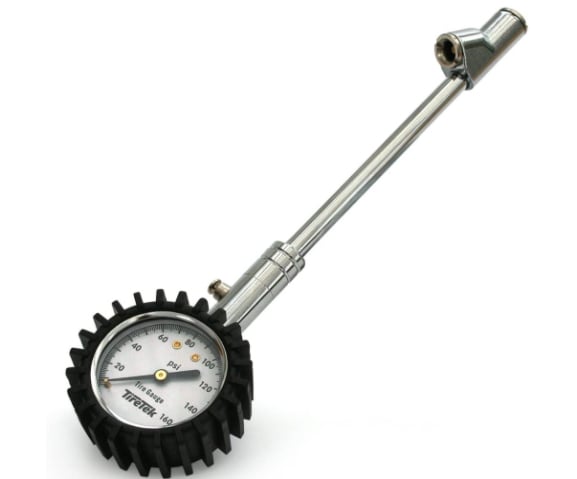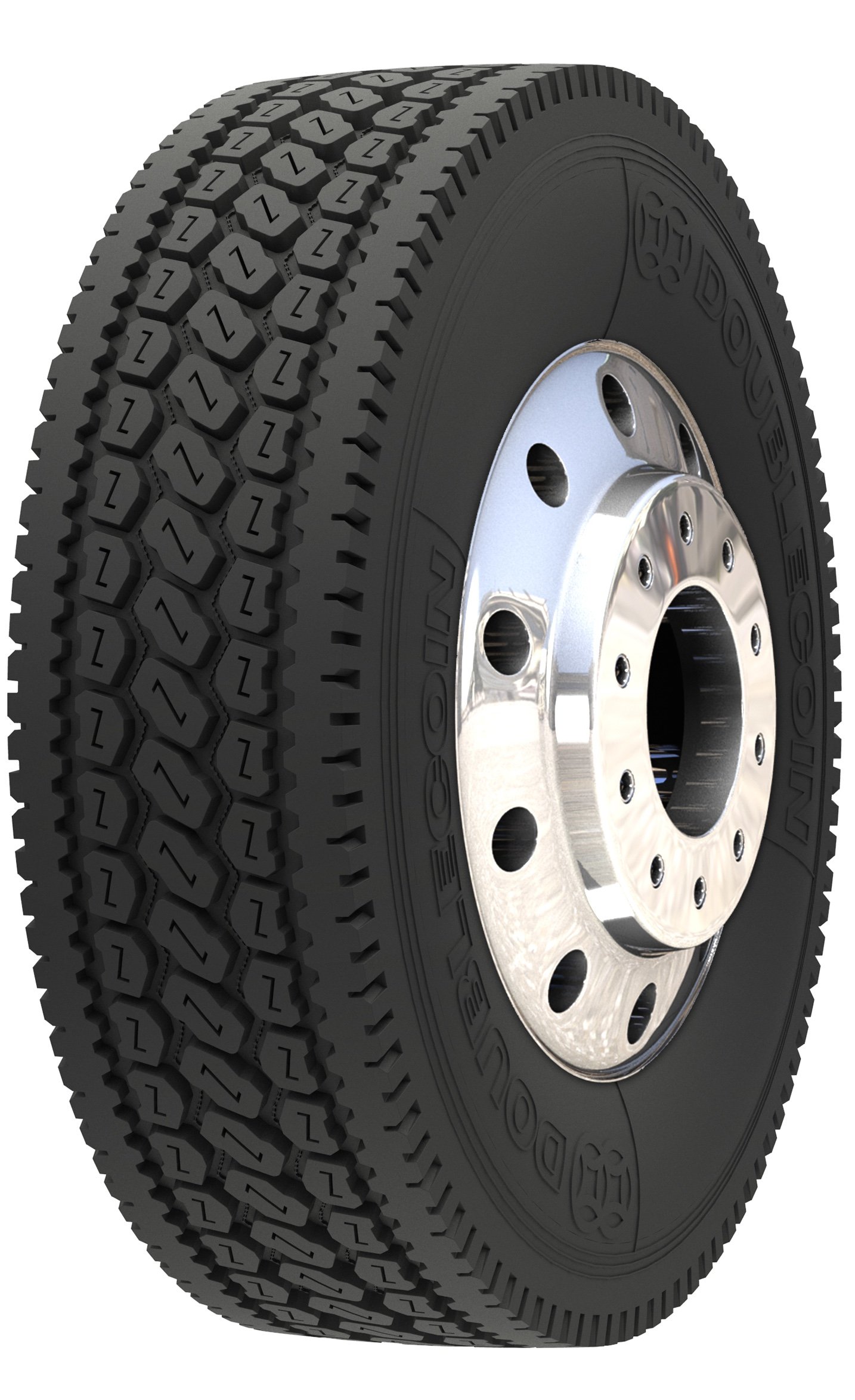Having a well-synchronized air pressure maintenance program between your drivers and your shop should be the single most important element of your tire policy and is really the easiest to administer. It certainly will have the biggest impact on your fleet costs associated with tires, including: fuel consumption, wear life, irregular wear, etc.
 An effective tire policy must include regular air pressure checks with a quality gauge. If you think you have a “well calibrated ear,” thumping the tires could possibly give you an idea of the difference in pressure between one tire and the other, but will never tell you the actual air pressure. Besides, the typical sound of a tire at a particular pressure will be different if the tire is hotter.
An effective tire policy must include regular air pressure checks with a quality gauge. If you think you have a “well calibrated ear,” thumping the tires could possibly give you an idea of the difference in pressure between one tire and the other, but will never tell you the actual air pressure. Besides, the typical sound of a tire at a particular pressure will be different if the tire is hotter.
Here are the reasons why a thump will never tell you the actual truth:
Always use a high-quality, accurate tire gauge and check your tires at a minimum of once a week. And always when they are cold. The days of using a tire club or stick are long gone and were really never an accurate way to tell how much air you have in a tire.
Tires such as the Double Coin RLB400 (pictured right) are highly-advanced  products featuring the latest technologies in compounding, tread design and construction. With the correct air inflation, they perform as they were designed with the tread contact patch or footprint (part of tread that touches the pavement) being where the designers intended. The correct footprint provides optimum traction, and durability is dramatically increased.
products featuring the latest technologies in compounding, tread design and construction. With the correct air inflation, they perform as they were designed with the tread contact patch or footprint (part of tread that touches the pavement) being where the designers intended. The correct footprint provides optimum traction, and durability is dramatically increased.
In fact, industry research reveals that underinflated tires will reduce tread life up to 25 percent. Underinflated tires build up heat. Heat is the number #1 enemy of tires, affecting the tire’s rolling resistance which leads to reduced fuel economy. And, of course, too much heat can lead to tire failure and downtime, which takes more money out of your pocket.
Overinflated tires are also detrimental to tire performance and your bottom line. They are more susceptible to road hazards such as impact breaks. The contact patch/footprint is also distorted with an overinflated tire, leading to irregular wear characterized by center rib wear or rib punch wear.
Also, always remember to inspect your valve stems, cores and caps when checking your tires.
Yes, it takes a little time each week to properly check your tires. But the payoff is substantial in terms of increasing the life of your tires, improving fuel economy, ensuring optimum tire performance, and reducing downtime due to tire failures.
We encourage you to contact your local Double Coin dealer for more information about best practices in tire maintenance.
Double Coin tires deliver exceptional value for a wide variety of commercial applications, including trucking, construction, mining, ports and agriculture. Our goal is to provide valuable information for those working in these industries.
X (Twitter)
🚛 Proud to see John Hagg featured in Fleet & Mobility’s August issue, “Evolution of an Industry” (pp. 38–39).
📖 Read the English edition here: https://www.calameo.com/read/0014923452d217a3c1d1c
#FleetAndMobility #TruckingIndustry #DoubleCoin #tires #tbr #autosphere #trucker #trucking
“Tariffs and cost uncertainty are real — but value still wins.”
Double Coin Senior VP, Aaron Murphy, talks with Mike Manges at Modern Tire Dealer about delivering cost-effective tire solutions in a turbulent market, and why listening to customers is key to navigating 2025.
Read…
@DoubleCoinTires Pumped to have Double Coin Tires back in the mix for 2026! 💪 Can’t wait to see what you’re rolling out in Vegas. See you at the booth!
Double Coin Tires to Exhibit at CONEXPO-CON/AGG 2026 in Las Vegas.
Double Coin Tires is proud to announce our return to CONEXPO-CON/AGG, North America’s largest construction trade show, taking place March 3–7, 2026 at the Las Vegas Convention Center. You’ll find us at Booth…
@conexpoconagg
Place your bets and get ready to be a dealt a winning hand – the largest construction trade show in North America RETURNS, and we’re raising the stakes 😏
Be the first to know when tickets go on sale in August, and of upcoming discounts 🤫 https://bit.ly/3RsfJJs

Add this ID to the plugin's Hide Specific Tweets setting:


